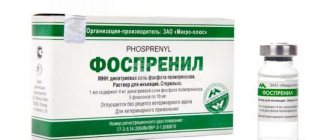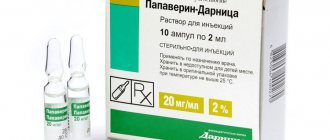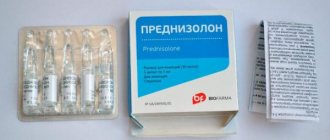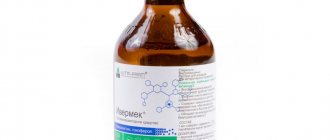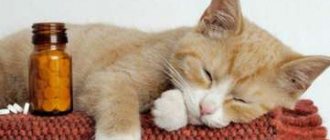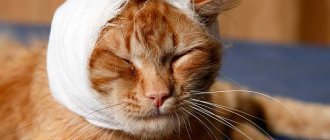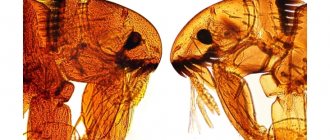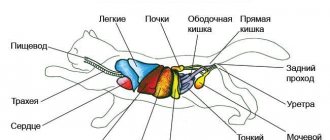Description when assigned
Amoxicillin for cats is effective in treating:
- leptospirosis and salmonellosis;
- enteritis and enterocolitis;
- endometritis and colibacillosis;
- abscess and cystitis;
- diarrhea and intestinal infections;
- mastitis and vaginitis;
- pneumonia.
The medicine is used for inflammation of soft tissues that were caused by infections. Veterinarians often use it to prevent complications that arise after various operations.
Indications and contraindications for use
Amoxicillin is prescribed for kittens and adult cats in the presence of a bacterial infection, as well as to prevent the development of complications in the postoperative period.
Indications for the use of antibiotics are the following diagnoses:
- endometriosis;
- salmonellosis;
- leptospirosis;
- enteritis;
- cystitis;
- enterocolitis;
- abscess;
- mastitis;
- vaginitis;
- rhinitis;
- diarrhea;
- intestinal infection of a bacterial nature;
- pneumonia;
- inflammation of soft tissues;
- other infections caused by microorganisms sensitive to penicillin antibiotics.
A contraindication to the use of the drug is hypersensitivity to the active component of the drug in the animal. It is also prohibited to prescribe Amoxicillin if the cat has the following diseases:
- renal failure;
- disruption of the functioning of the organs of the excretory system, in particular the kidneys;
- liver failure.
An antibiotic is prescribed for kittens or a pregnant cat only in extreme cases, since even a slight overdose of the drug can cause significant developmental abnormalities in the offspring.
Interactions with other drugs and side effects
It is strictly forbidden to combine a medicine such as Amoxicillin for cats with antibiotics, Thiamphenicol, Chloramphenicol.
Before using the drug, you must visit a veterinarian to check that the animal is not allergic to the active substance, and there is no intolerance to the components of its composition. If, after using the medication, your pet develops swelling on the skin or begins to sneeze frequently, you should stop taking it immediately. In addition, it should never be given if you have kidney failure. Before using the medicinal composition, you must read the instructions. Never use it for an extended period of time without consulting your veterinarian.
The suspension is administered only intramuscularly and not into a vein.
Release form and composition
The drug is most often used in the form of injections, which are prescribed based on the severity of the disease, as well as the weight of the animal. Amoxicillin is available in three forms:
- suspension for injection;
- pills;
- powder.
The tablets are packaged 10 pieces in one blister or 24 pieces in a glass bottle.
The powder in one package can be from 50 g to 25 kg.
Suspensions (15%) must be stored in dark glass containers, and they can be purchased at a pharmacy starting from 10 ml in an ampoule and up to 250 ml in one bottle.
Amoxicillin for cats in tablets or powder is not recommended to be prescribed independently, since it is very difficult to calculate the required dose for cats if the person is not a specialist.
This is explained by the fact that the weight of the animal is small, so any slightest deviation in the dosage of the medication can lead to a number of side effects.
1 ml of suspension contains the following components:
- 150 mg amoxicillin trihydrate;
- white oily filler.
It is important to note that the antibiotic that is prescribed to treat diseases in humans is absolutely not intended to treat animals, since in this case the medicine contains a different dosage of the active substance.
What can be replaced if necessary?
We list drugs similar to Amoxicillin:
- Amoxil tablets are characterized by good digestibility (the active substances are absorbed into the blood within three hours after administration);
- Amoxisan suspensions are most often used to treat infectious diseases;
- Bactoclav has a wide range of applications.
Amoxisan
pharmachologic effect
Amoxicillin is a semisynthetic antibiotic that belongs to the penicillin series. Its pharmacological action is based on slowing down and completely blocking the formation of cell walls in bacteria, as well as their enzymes. As a result, cell division and growth first slows down, and then they die.
The antibiotic is effective against the following number of pathogenic microorganisms:
- salmonella;
- Leptospira;
- staphylococcus;
- streptococcus;
- listeria;
- coli;
- bacteria of the genus Protea;
- enterococcus;
- clostridia and others.
The oily filler contained in the ampoule not only helps maintain the activity of the active substance, but also contributes to the rapid dissolution of the antibiotic in the blood, which is why the drug spreads faster through the bloodstream throughout the body and reaches the source of infection.
It begins to act within 1-2 hours after the suspension is introduced into the body. The therapeutic effect lasts for 2 days.
The active substance can accumulate in the body in the following organs:
- kidneys;
- intestines;
- liver;
- muscles;
- stomach.
The antibiotic is excreted to a greater extent in the urine, and to a lesser extent in bile and milk. In view of this, cats nursing kittens should be prescribed Amoxicillin only if the benefit to the animal is greater than the risk of complications that may develop in kittens. Treatment in this case should occur strictly under the supervision of a veterinarian.
reviews
Vaska had terrible diarrhea for several days. After 3 days of his torment, I took the animal to the veterinarian. The result was dysentery. The doctor recommended Amoxicillin. I gave the powder for four days. Over time, the cat began to eat normally and gradually recovered. He tolerated the medicine quite well. No additional medications were needed.
After the kittens were born, we decided to wean them off the cat's breast early. As a result, mastitis developed. They thought that everything would go away on its own, but it was obvious how much pain she was in, so they brought her to the vet. To prevent complications, the veterinarian injected her with Amoxicillin for cats. Two days later, the administration of the drug was repeated. Three days later, the cat became healthy and cheerful, began to eat normally, and the mastitis disappeared. Thanks doctor!
How to give a cat a suspension video
Dosage of the drug
According to the instructions for use, Amoxicillin cannot be administered intravenously. Antibiotic injections must be given either intramuscularly or subcutaneously.
In this case, swelling may remain at the injection site for some time. Before administering the injection, shake the ampoule well so that its contents are well mixed. For an injection, it is best to take a thin needle; you can use insulin syringes for this. To avoid infection, the syringe and needle must be sterile, and the injection site must first be disinfected.
The dosage of Amoxicillin for cats should be as follows: 0.1 ml per 1 kg of animal body weight no more than once every two days. If the disease occurs in a complex form, the dose of the antibacterial drug is increased to 4-5 times a day, but treatment occurs in a hospital. In this case, injections need to be given in different places. The duration of treatment is determined based on the severity of the disease and the general condition of the animal.
Tablets should be given to a cat in a dosage of 12.5 mg of active substance per 1 kg of animal body weight. Therefore, before use, you should pay special attention to how many milligrams of the active compound, that is, the antibiotic itself, is contained in one tablet.
If one tablet of amoxicillin contains 250 mg of antibiotic, this means that one tablet is designed for an animal weighing 20 kg. Therefore, if the cat weighs 5 kg, it is recommended to give a quarter of the tablet at a time.
Since the tablet has a bitter taste, veterinarians recommend giving it to the animal by force, placing it on the root of the tongue. Otherwise, the bitter taste of the medicine may cause your cat to salivate excessively. On average, the course of treatment should last 5-7 days, and the drug should be given once a day. If the disease occurs in an acute form, then it is recommended to double the dose, that is, either give a double dose at a time (25 mg of active substance per 1 kg of cat’s body weight), or give one dose twice a day.
If Amoxicillin is prescribed to a cat in powder form, the medicine must be given to the pet after diluting it in water or milk. If the powder is 10%, then 0.5-1 g of medication will be required per 5 kg of the cat’s body weight. It is prescribed once a day for 5-7 days. To dose the drug correctly, you can use a measuring spoon for convenience.
It is important to note that during treatment with Amoxicillin it is strictly forbidden to give the animal any other antibiotics.
Amoxicillin for cats: when is it used?
Like any medicine for an animal, Amoxicillin can only be prescribed by a veterinarian, prescribing the appropriate dosage and prescribing a dosage schedule based on the weight and age of the cat, as well as the disease affecting the animal.
Cats may need antibiotic therapy for a number of illnesses.
The instructions for use of the drug indicate that the antibiotic is effective in the following cases:
- Purulent inflammations, abscesses, skin lesions, deep ulcers, wounds, injuries.
- Mastitis, endometritis.
- Prevention of purulent infections after surgical interventions, including sterilization of animals.
- Respiratory diseases: rhinitis, pneumonia, bronchitis and the like.
- Malfunctions of the genitourinary system: cystitis, vaginitis, urethritis.
- Diseases of the gastrointestinal tract.
- Skin diseases caused by staphylococcal and streptococcal bacteria.
- Enteritis, salmonellosis, stool disorders and the like.
Like any medicine, Amoxicillin has some contraindications. In general, this is a drug that does not cause complications or side effects when used strictly according to the instructions and under the supervision of a doctor. However, Amoxicillin is contraindicated for cats that suffer from intolerance to penicillin antibiotics or specifically amoxicillin. To identify this in advance, a special analysis is done to determine which antibiotics are effective for a particular animal.
A qualified veterinarian should prescribe the drug and monitor the progress of treatment.
We suggest you familiarize yourself with what to feed catfish in an aquarium: catfish eat food in the form of tablets
It is also prohibited to take Amoxicillin together with other antibiotics of the penicillin group, as well as medications containing cephalosporin, chloramphenicol and fluoroquinolone. Amoxicillin is not suitable for animals suffering from liver diseases, chronic dysbiosis, or problems with the cardiovascular system.
Table. Side effects of Amoxicillin
| Adverse reaction | Manifestation | How to eliminate the side effect? |
| Allergic reaction | The animal itches (especially pronounced in the head area), the eyes may “swim” a little | Treated with antihistamines as prescribed by a veterinarian |
| Local reaction | Swelling at the injection site, swelling, or a lump that may be hot to the touch | In the absence of allergies, it passes and resolves on its own. |
| Dyspeptic phenomena | Diarrhea, vomiting | Immediate discontinuation of the drug and a visit to the veterinary clinic is required |
| Nervous excitement, ataxia | Loss of coordination in the animal, change in behavior | May cause painful shock; in any case, it is necessary to show the animal to a veterinarian |
| Development of hepatitis | If your cat has liver problems, you should inform your doctor. | The drug is contraindicated in animals with liver disease |
| Tachycardia, shortness of breath | The animal breathes heavily, deeply and quickly, and behaves sluggishly | The cat should be taken to a veterinary clinic immediately as there is a risk of anaphylactic shock or neuropenia |
Side effects
As a rule, the animal may develop swelling at the injection site, which goes away on its own within a few days.
To prevent its occurrence, it is recommended after the injection to massage the injection site with light and smooth movements.
If an animal develops an allergic reaction to a drug, it is necessary to immediately stop treatment and be sure to consult a veterinarian to change the medication. To eliminate allergy symptoms, the cat is prescribed glucocorticosteroids, as well as enterosorbents. Treatment is carried out symptomatically.
In rare cases, the use of the drug may cause the following side effects:
- diarrhea;
- vomit;
- disruptions in the functioning of the heart, in particular tachycardia;
- violation of spatial perception and others.
As a rule, such side effects occur after an overdose of the drug, when the animal was given a tablet. To eliminate them, it is necessary to discontinue the medication and prescribe symptomatic treatment.
Very often, while taking an antibiotic, a cat can develop dysbacteriosis, as well as weaken its immunity. Therefore, in parallel with treatment with Amoxicillin, various vitamin complexes, immunostimulants, and probiotics containing bifidobacteria and lactobacilli are prescribed, which help restore the normal microbiota of the gastrointestinal tract.
Indications
Amoxicillin is prescribed if the cat has gastrointestinal diseases, for example, salmonellosis, diarrhea, gastroenteritis. For rhinitis, bronchitis and other diseases of the organs responsible for respiratory function. Prescribed for diseases of the genitourinary system (cystitis, vaginitis), for bodily injuries, joint inflammation, diseases of the skin and soft tissues. The product is used for preventive purposes against infections after surgical operations. Contraindications
Amoxicillin is contraindicated in cats that are hypersensitive to all beta-lactam antibiotics. This remedy should not be used if there are problems with the liver, as the possibility of developing hepatitis is high. Do not mix the solution with other drugs.
Advantages and disadvantages
The positive aspects of using this drug include a wide range of fight against microbes, destruction of toxins, effective assistance even in small doses, and quick healing. If you strictly follow the rules of use, the drug will be almost non-toxic.
You should not self-medicate your pet, as any
antibiotics, including Amoxicillin, have their side effects. The most common manifestation is allergies. The place where the injection was given may become red, swollen, and conjunctivitis may begin to develop.
More severe situations lead to the appearance of dermatitis. If there is a hint of an allergic reaction, the drug should be stopped immediately. Side effects include possible vomiting, severe diarrhea, and changes in taste preferences. Although rare, there have been cases of ulcerative stomatitis due to taking the drug.
The behavior of the animal may also change; it becomes agitated, and coordination of movements may be impaired. The administration of the drug can lead to painful sensations and the cat begins to walk with a limp. Some animals experience difficulty breathing and hoarseness. Long-term and unnecessary use of an antibiotic can give rise to the development of fungi in the oral cavity and diseases of the genital organs.
What does amoxicillin help for cats?
Amoxicillin for cats is a safe (and not according to experts, but a more valuable opinion - according to the reviews of those owners who have already used it) antibacterial medicine, produced mainly in the form of injections (although there are other forms) for the treatment of bacterial infections and a large number of others diseases.
This antibiotic does a lot; it actively fights the following parasites:
- coli;
- staphylococcus;
- streptococcus;
- and other bacteria.
Veterinarians prescribe it for infectious diseases and inflammations, as well as in cases of complications of these ailments.
It plays an important role in treatment so that the pathogen is as sensitive as possible to this medicine. Therefore, it is very important to visit a veterinarian before your appointment.
If he prescribes this drug, he must decide on the dosage. And then tell the owner what it should be like.
The instructions for use contain all the important points that the owner must familiarize himself with, especially if he forgets what the veterinarian said.
Analogs and price
The price of the suspension varies from 120 to 250 rubles per bottle of 10 ml. Tablets will cost less: approximately 70 rubles for a package of 10 tablets.
There are a lot of antibiotic analogues. Among the most famous: Amoxisan, Amoximag, Clamoxil LA.
Different forms of release can also be considered an advantage, since in one case it is convenient to use a tablet, and in another an injection. Overall, amoxicillin is an inexpensive and fairly effective antibiotic.
But before using such drugs, you still need to consult a specialist.
Our four-legged friends have fairly strong immunity. However, they also experience infectious diseases that are caused by various bacterial agents.
There are no specific types of antibacterial substances for dogs that are not used in other mammals. Man's best friends are treated with our human medicines. This also applies to antibiotics.
The most common antibacterial drug in humans is amoxicillin, which often saves people from bacterial infections. Can it be used on dogs?
Important! Antibacterial agents for dogs can be produced in specialized veterinary dosage forms with the dosage recalculated for the body of the animal for which they are created. However, the active substance is similar to human medicines
In what cases is an antibiotic prescribed?
The prescription of amoxicillin occurs quite often in veterinary practice. This is due to the fact that the antibiotic described has a wide spectrum of action and is relatively safe for dogs. This means that many microorganisms are susceptible to the antibacterial effects of the drug.
Attention! Amoxicillin is a fairly old antibiotic. It is for this reason that some species or strains of bacteria have managed to develop resistance to it.
Among the pathological conditions of the animal for which doctors prescribe amoxicillin are inflammatory diseases:
- organs of the gastrointestinal tract (gastritis, gastroenteritis, gastroenterocolitis, enteritis, colitis, enterocolitis);
- respiratory tract (rhinitis, nasopharyngitis, laryngitis, bronchitis, bronchiolitis, pneumonia and others);
- musculoskeletal system (most often joints): arthritis, arthrosis, synovitis and so on;
- endometrium in bitches (endometritis);
- mammary glands (mastitis);
- purulent-inflammatory kidney disease (pyelonephritis);
- infectious and inflammatory disease of the bladder (cystitis) and many others.
For otitis media
Otitis media refers to an inflammatory disease of the dog's hearing organ. In this case, local impact is best. Since amoxicillin does not have a dosage form in the form of ear drops, its use is advisable only in case of systemic bacterial complications. The drug is not suitable for treating ear infections alone.
To relieve swelling
Edema is an excessive accumulation of fluid of various locations in the animal’s body. This phenomenon can also be observed in dogs. Swelling of organs and tissues can occur due to heart or kidney failure, as well as inflammatory processes. Amoxicillin is not used to treat all these conditions.
Important! If the inflammatory process is caused by any microorganisms, the described antibiotic can be used in complex drug therapy. However, its action is aimed at suppressing the proliferation of bacteria, and not at relieving swelling.
Human
Since the main active ingredient of amoxicillin is no different from human amoxicillin, its use is permissible with a clear calculation of the dosage based on the dog’s body weight.
Important! It is better to give preference to veterinary forms of amoxicillin, which are easier to dose and will not lead to unwanted side effects
Storage conditions and shelf life
The shelf life of the drug is 36 months from the date of production. It should be stored in a shaded place, out of reach of children and animals, separately from food and feed, at a temperature of 5.. 25 °C.
After opening the ampoule, the suspension is stored for 14 days.
According to reviews from veterinarians and cat owners, Amoxicillin is an effective and safe drug for the treatment of bacterial infections. The accumulation of the maximum concentration of the drug in a short time and a long-term therapeutic effect make it possible to quickly cure an animal with an internal infection.
How to use
The instructions for use indicate that Amoxicillin injections for cats are given intramuscularly or subcutaneously. The drug must not be administered intravenously. For injections, disposable sterile syringes are used. You can use insulin syringes with a thin needle. Before use, the bottle with the suspension should be shaken well so that the solution becomes homogeneous.
The antibacterial agent is administered once at a dose of 0.1 ml per 1 kg of weight. If necessary, the procedure is repeated after 48 hours. In case of severe disease, the number of injections can be increased up to 3-5 times. Injections are given at intervals of two days. The duration of treatment is determined by the veterinarian depending on the symptoms, disease and general health. If repeated administration of the medication is required, injections should be given in different places.
Note! It is strictly forbidden to mix Amoxicillin with other drugs in the same syringe.
Pills
When using tablets, the dosage is calculated as follows: 12.5 mg of active substance per 1 kg of weight. It is necessary to take into account the concentration of the active substance. For example, a 250 mg Amoxicillin tablet is designed for 20 kg of weight. For an animal weighing about 5 kg, only a quarter of one tablet will be needed.
It is better to give the tablets by force, placing them on the root of the tongue. Since the medicine is bitter, it may cause excessive salivation in cats. The duration of treatment when using this dosage form is 5-7 days. Tablets are given once a day. In case of severe pathology, Amoxicillin is given twice a day or the single dose is doubled - up to 25 mg per 1 kg.
Instructions for use
In veterinary medicine, amoxicillin is prescribed for the treatment of:
- pigs;
- cows;
- dogs, etc.
Thus, the drug can be used in most pets and cattle. The necessary antibacterial effect is achieved for the following animal diseases:
- Gastrointestinal disorder as a result of an infectious process.
- Inflammation of soft tissues and skin bacterial diseases, including infected wounds.
- Infections of the respiratory tract, throat and ear (bronchitis, tonsillitis, tracheobronchitis, etc.).
- Inflammation of the genitourinary tract (cystitis).
- Respiratory diseases due to bacterial infection.
- Prevention of infections during surgery.
- Also effective for dental disease.
Tell your veterinarian if your pet has ever had an allergic reaction to another penicillin drug or cephalosporin, or if your pet has kidney, stomach, or intestinal problems.
